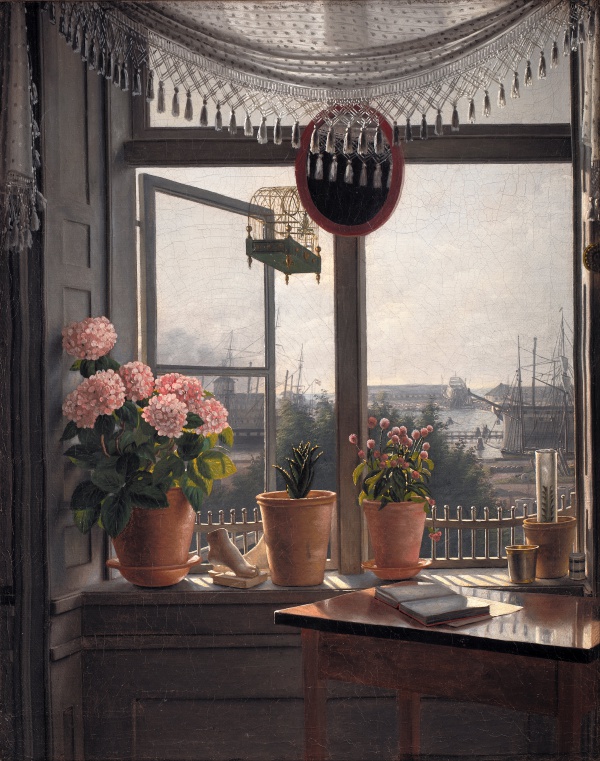Facts About View from the Artist's Window
"View from the Artist's Window" a captivating painting from 1825 by Martinus Rørbye, a renowned Danish Romantic painter, exemplifies the Danish Golden Age. Known for his landscapes and architectural scenes, Rørbye studied at the Royal Danish Academy of Fine Arts, drawing inspiration from artists like Johann Christian Dahl and Caspar David Friedrich. This particular work is part of the collection at the Statens Museum for Kunst in Copenhagen.
The painting provides a nostalgic view from Rørbye's childhood home, showcasing Flådestation Holmen, a bustling naval dockyard with ships and a crane. True to the Romantic era, the painting is replete with symbolism. The open window invites light, symbolizing hope, while the ships evoke a longing for adventure and distant shores. Above the window, a caged bird suggests a yearning for freedom, and the potted plants symbolize various stages of life and growth. A sketchbook with blank pages hints at boundless creative possibilities, and a mirror reflecting the artist's workspace adds a personal touch to the scene.
Rørbye completed "View from the Artist's Window" during a pivotal period in his career, marked by artistic evolution under the mentorship of Christoffer Wilhelm Eckersberg and the wider Romantic movement. The painting's intricate details and layered symbolism demonstrate Rørbye's deepening artistic maturity and his expanding ability to convey complex emotions and ideas through his work.

 Germany
Germany